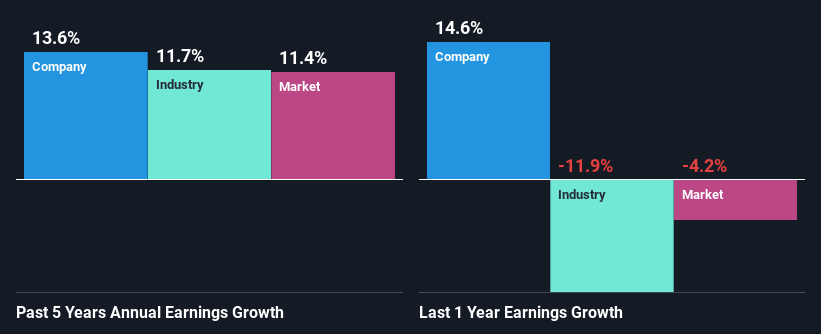ISEC Healthcare Ltd. (Catalist:40T) Stock Has Shown Weakness Lately But Financials Look Strong: Should Prospective Shareholders Make The Leap?
ISEC Healthcare (Catalist:40T) has had a rough three months with its share price down 7.5%. However, a closer look at its sound financials might cause you to think again. Given that fundamentals usually drive long-term market outcomes, the company is worth looking at. Particularly, we will be paying attention to ISEC Healthcare's ROE today.
Return on equity or ROE is an important factor to be considered by a shareholder because it tells them how effectively their capital is being reinvested. Put another way, it reveals the company's success at turning shareholder investments into profits.
View our latest analysis for ISEC Healthcare
How Is ROE Calculated?
The formula for return on equity is:
Return on Equity = Net Profit (from continuing operations) ÷ Shareholders' Equity
So, based on the above formula, the ROE for ISEC Healthcare is:
17% = S$14m ÷ S$80m (Based on the trailing twelve months to September 2023).
The 'return' is the amount earned after tax over the last twelve months. One way to conceptualize this is that for each SGD1 of shareholders' capital it has, the company made SGD0.17 in profit.
What Has ROE Got To Do With Earnings Growth?
Thus far, we have learned that ROE measures how efficiently a company is generating its profits. Depending on how much of these profits the company reinvests or "retains", and how effectively it does so, we are then able to assess a company’s earnings growth potential. Assuming everything else remains unchanged, the higher the ROE and profit retention, the higher the growth rate of a company compared to companies that don't necessarily bear these characteristics.
ISEC Healthcare's Earnings Growth And 17% ROE
To start with, ISEC Healthcare's ROE looks acceptable. Especially when compared to the industry average of 11% the company's ROE looks pretty impressive. This probably laid the ground for ISEC Healthcare's moderate 14% net income growth seen over the past five years.
As a next step, we compared ISEC Healthcare's net income growth with the industry and found that the company has a similar growth figure when compared with the industry average growth rate of 12% in the same period.
The basis for attaching value to a company is, to a great extent, tied to its earnings growth. It’s important for an investor to know whether the market has priced in the company's expected earnings growth (or decline). By doing so, they will have an idea if the stock is headed into clear blue waters or if swampy waters await. If you're wondering about ISEC Healthcare's's valuation, check out this gauge of its price-to-earnings ratio, as compared to its industry.
Is ISEC Healthcare Efficiently Re-investing Its Profits?
ISEC Healthcare has a significant three-year median payout ratio of 80%, meaning that it is left with only 20% to reinvest into its business. This implies that the company has been able to achieve decent earnings growth despite returning most of its profits to shareholders.
Besides, ISEC Healthcare has been paying dividends over a period of eight years. This shows that the company is committed to sharing profits with its shareholders.
Conclusion
Overall, we are quite pleased with ISEC Healthcare's performance. In particular, its high ROE is quite noteworthy and also the probable explanation behind its considerable earnings growth. Yet, the company is retaining a small portion of its profits. Which means that the company has been able to grow its earnings in spite of it, so that's not too bad. So far, we've only made a quick discussion around the company's earnings growth. You can do your own research on ISEC Healthcare and see how it has performed in the past by looking at this FREE detailed graph of past earnings, revenue and cash flows.
Have feedback on this article? Concerned about the content? Get in touch with us directly. Alternatively, email editorial-team (at) simplywallst.com.
This article by Simply Wall St is general in nature. We provide commentary based on historical data and analyst forecasts only using an unbiased methodology and our articles are not intended to be financial advice. It does not constitute a recommendation to buy or sell any stock, and does not take account of your objectives, or your financial situation. We aim to bring you long-term focused analysis driven by fundamental data. Note that our analysis may not factor in the latest price-sensitive company announcements or qualitative material. Simply Wall St has no position in any stocks mentioned.

 Yahoo Finance
Yahoo Finance 
